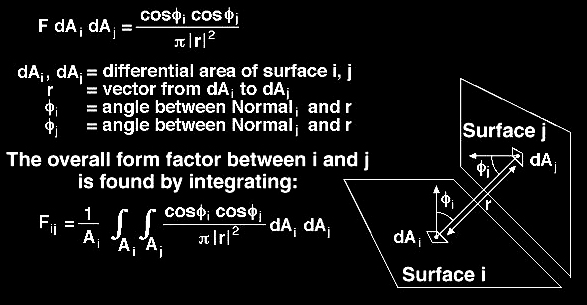Wireframe models Wireframe models with hidden lines
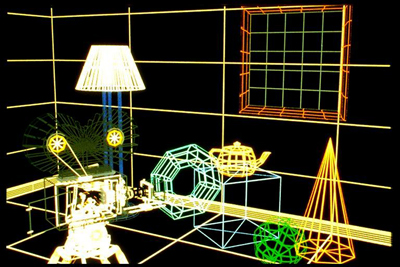
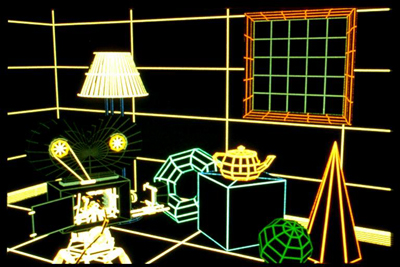
Computer Graphics |
|
Basics |
Object Model
Lighting Model
Camera Model
Wireframe
models
Wireframe
models with hidden lines

Ambient
Illumination
Faceted Shading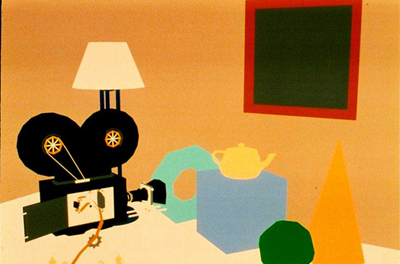
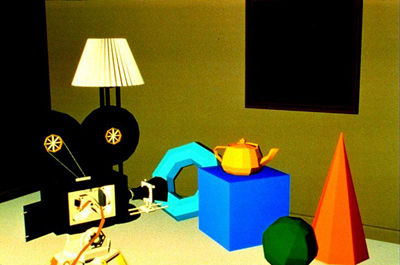
Phong
Shading - Polygon Meshes
Phong Shading - Bicubic Patches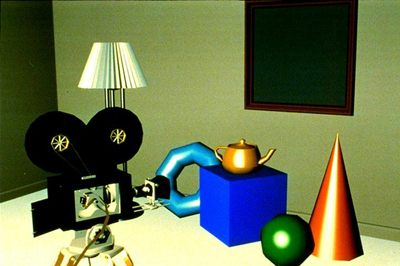
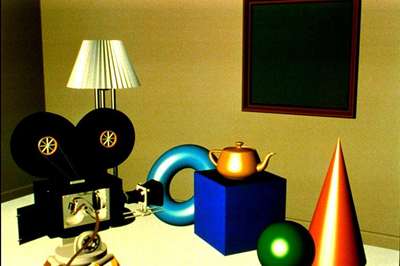
Advanced
Illumination
Texture Mapping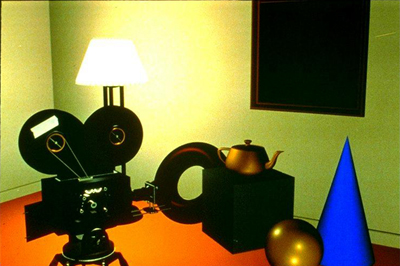
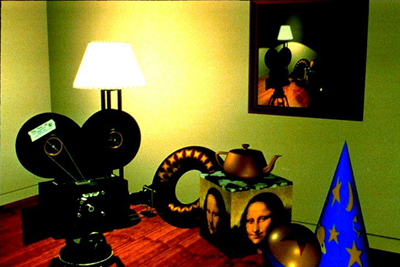
Bump
Mapping
Reflection Mapping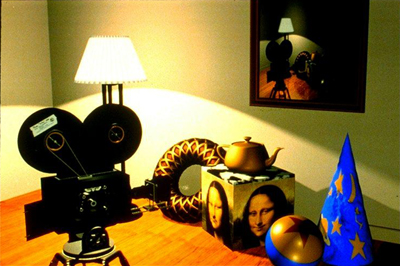
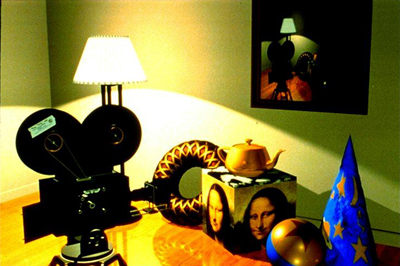
|
35mm Camera |
Focal Length(mm) |
Angle of View (Degrees) |
|
Extreme Telephoto |
800 |
3.5 |
|
|
400 |
6.0 |
|
|
200 |
12.5 |
|
Moderate Telephoto |
135 |
18.0 |
|
|
85 |
29.0 |
|
|
50 |
46.0 |
|
Normal |
43 |
53.0 |
|
Moderate Wide Angle |
24 |
84.0 |
|
Wide Angle |
18 |
94.0 |
Unit Cube at 5 units from image
plane
Camera
held fixed with different angles of view
(Extreme
Wide Angle, Wide Angle, Normal, Telephoto)

Camera
position adjusted maintaing constant image size
(Extreme
Wide Angle, Wide Angle, Normal, Telephoto)
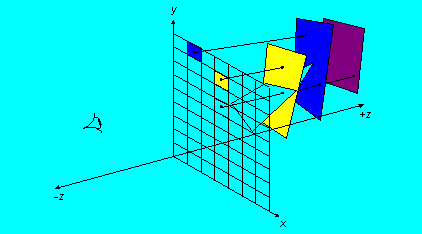
Object Space
Painter's
Algorithm - Depth Sort
Image Space
z-buffer
(depth buffer)
Illumination Model
Surfaces in real world environments receive light in 3 ways:
Directly from exisiting light sources such as the sun or a lit candle
Light that passes and refracts through transparent objects such as water or a glass vase
Light reflected, bounced, or diffused from other exisiting surfaces in the environment
Material Models
ambient light
diffuse light
specular light
Phong model
Simple Shading Model
Objects under the influence of light
Deficiencies
point light source
no interaction between objects
ad hoc, not based on model of light propagation
Benefits
fast
acceptable results
hardware support
Diffuse Reflection
Light from the light source is sent in everyu direction
Object appearance independent of viewer position
Only depends on relative position of light source
Imperfect
Reflector - Phong Model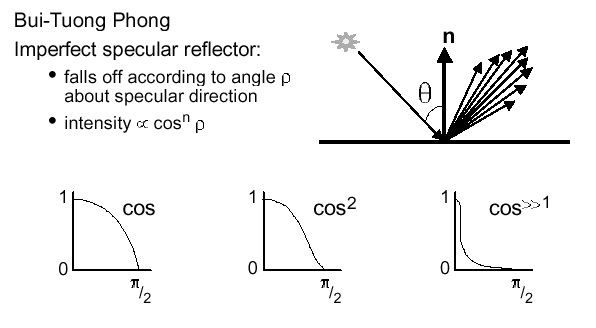
Radiosity Method
From field of thermal engineering to account for radiative heat transfer
Foundation - conservation of radiative energy in a closed environment
First applied to computer graphics in 1984 at Cornell and Hiroshima University
Calculates lighting effects of ideal diffuse reflections
Other rendering techniques use a directionless " ambient lighting "
are three-dimensional object space algorithms that solve for intensities at disrcete points or areas on modeled surfaces, not for pixels on a 2D image plane.
create solutions independent of camera location or orientation.
make all surfaces capable of reflecting or emitting light energy
Radiosity methods compute specular reflections and refractive transparencies as a second pass using ray-traced specular reflections and transparencies
Radiosity Procedure
1.
Modeled world is broken into a finite number of N discrete patches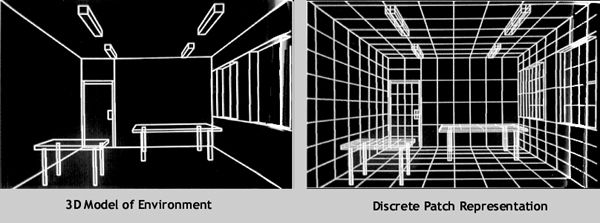
2.
Radiosity equation used to relate patches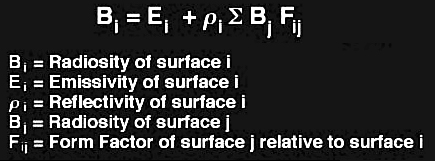
3.
N simultaneous equations solved iterartively using Gauss-Seidel
method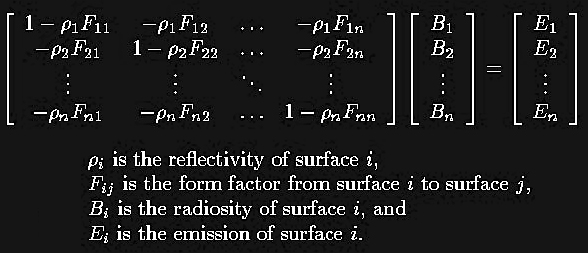
4. The
radiosity equation uses of the following:
Energy that
leaves Surface_A and strikes Surface_B is attenuated by 2
factors:
The physical relationship between Surface_A and Surface_B (known as the form factor).
The reflectivity of Surface_A (some light will be absorbed and not reflected to Surface_B).
5.
Form factors are dimensionless quantities that describe the radiative
exchange between 2 surfaces based on the geometric relationship
within their virtual environment